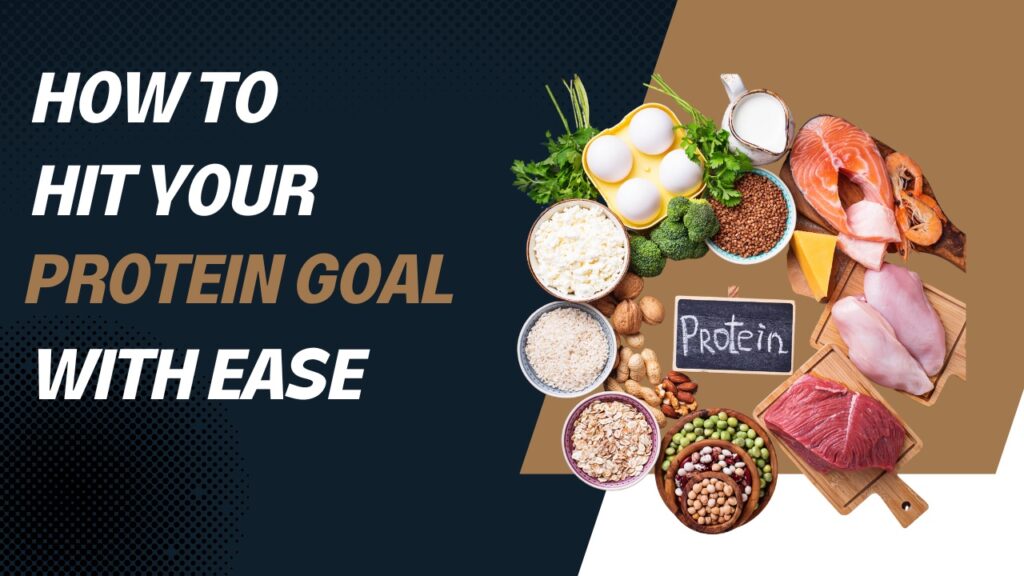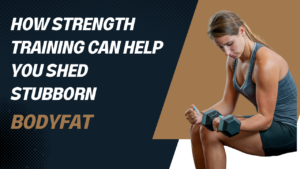Getting the right amount of protein is essential whether your goal is fat loss or building muscle, but most people don’t get nearly enough from the typical diet and it keeps them from reaching their goals.
Keep reading to see how you can hit your protein goal without stuffing yourself or having to go full carnivoree.
Protein isn’t reserved for bodybuilders or fitness enthusiasts; it’s a fundamental component for anyone striving for a healthier, stronger body, here’s why.
- Muscle Building: Picture protein as the building block of muscle tissue. When you engage in physical activities, especially those involving resistance training, you create microscopic tears in your muscles. Here’s where protein steps in, facilitating the repair and rebuilding process, making your muscles stronger and more defined.
- Fat Loss: Protein isn’t just about building muscles; it’s a secret weapon for fat loss too! It revs up your metabolism, ensuring you burn more calories throughout the day. Additionally, it keeps you feeling full and satisfied, reducing the likelihood of succumbing to cravings and mindless snacking sessions.
The general guideline for protein intake is approximately 0.7 grams per pound of body weight. For instance, if your weight is 150 pounds, aim for around 105 grams of protein daily. This ensures you provide your body with the necessary fuel to support your fitness goals.
Actionable Tips for Getting Adequate Protein:
- Meal Planning: Dedicate some time to plan your meals and snacks for the day. Ensure each meal incorporates a good source of protein, such as lean meats, poultry, fish, tofu, tempeh, beans, lentils, Greek yogurt, or protein shakes.
- Prioritize Protein at Breakfast: Kickstart your day by incorporating protein into your breakfast. Options like eggs, Greek yogurt, or a protein smoothie are excellent choices that not only jumpstart your metabolism but also keep you feeling full until lunchtime.
- Snack Smart: Opt for protein-rich snacks to stave off hunger between meals. Almonds, cottage cheese, jerky, or a small serving of Greek yogurt with fruit are convenient and satisfying choices.
- Don’t Skip Post-Workout Protein: After a rigorous workout, your muscles are primed for replenishment. Consuming a protein-rich snack or meal within 30 minutes to an hour post-exercise supports muscle recovery and growth.
- Supplement Wisely: If meeting your protein needs through whole foods alone proves challenging, consider incorporating a high-quality protein powder into your routine. It offers a convenient way to boost protein intake, especially on busy days.
Protein and Muscle Building: Protein provides the essential amino acids needed for muscle protein synthesis. This process involves the creation of new muscle protein, aiding in muscle repair and growth. Without an adequate supply of protein, your body can’t effectively repair and build muscle tissue.
To optimize muscle building, distribute your protein intake evenly throughout the day. This ensures a steady supply of amino acids for muscle repair. Aim for protein-rich snacks or meals every 3-4 hours.
Protein and Fat Loss: Including sufficient protein in your diet during a caloric deficit (consuming fewer calories than your body needs) helps preserve lean muscle mass. When losing weight, the goal is typically to shed fat while maintaining or building muscle. Protein assists in achieving this delicate balance.
Additionally, the thermic effect of food (TEF) is higher for protein compared to carbohydrates or fats. TEF refers to the energy expended during digestion, absorption, and distribution of nutrients. Protein has a higher TEF, meaning your body burns more calories processing protein than it does with other macronutrients.
Practical Strategies for Increasing Protein Intake: Now that we’ve highlighted the significance of protein for both fat loss and muscle building, let’s explore some practical strategies to help you boost your protein intake.
- Experiment with Protein-Packed Recipes: Make protein the star of your meals by experimenting with recipes that feature lean meats, poultry, fish, or plant-based protein sources like tofu and legumes. Pinterest and cooking blogs are treasure troves of delicious and protein-rich recipes.
- Incorporate Greek Yogurt into Your Diet: Greek yogurt is a versatile and protein-packed dairy option. Use it as a base for smoothies, mix it with fruit for a tasty snack, or even substitute it for sour cream in various recipes.
- Choose High-Protein Snacks: Opt for snacks that not only curb your cravings but also provide a protein punch. Almonds, cottage cheese, hard-boiled eggs, and beef jerky are excellent choices that can keep you satisfied between meals.
- Prep Protein-Rich Grab-and-Go Options: Prepare protein-rich grab-and-go options for those busy days when time is of the essence. Hard-boiled eggs, pre-cut veggies with hummus, or a protein shake can be lifesavers when you’re on the move.
- Customize Your Protein Shakes: If you’re a fan of protein shakes, customize them to suit your taste and preferences. Experiment with different protein powders, fruits, and liquids to create a shake that not only meets your protein needs but also satisfies your palate.
Struggling with finding what foods to eat for your goal?
Click the button below to book a free no-sweat intro and start your fitness transformation today!



